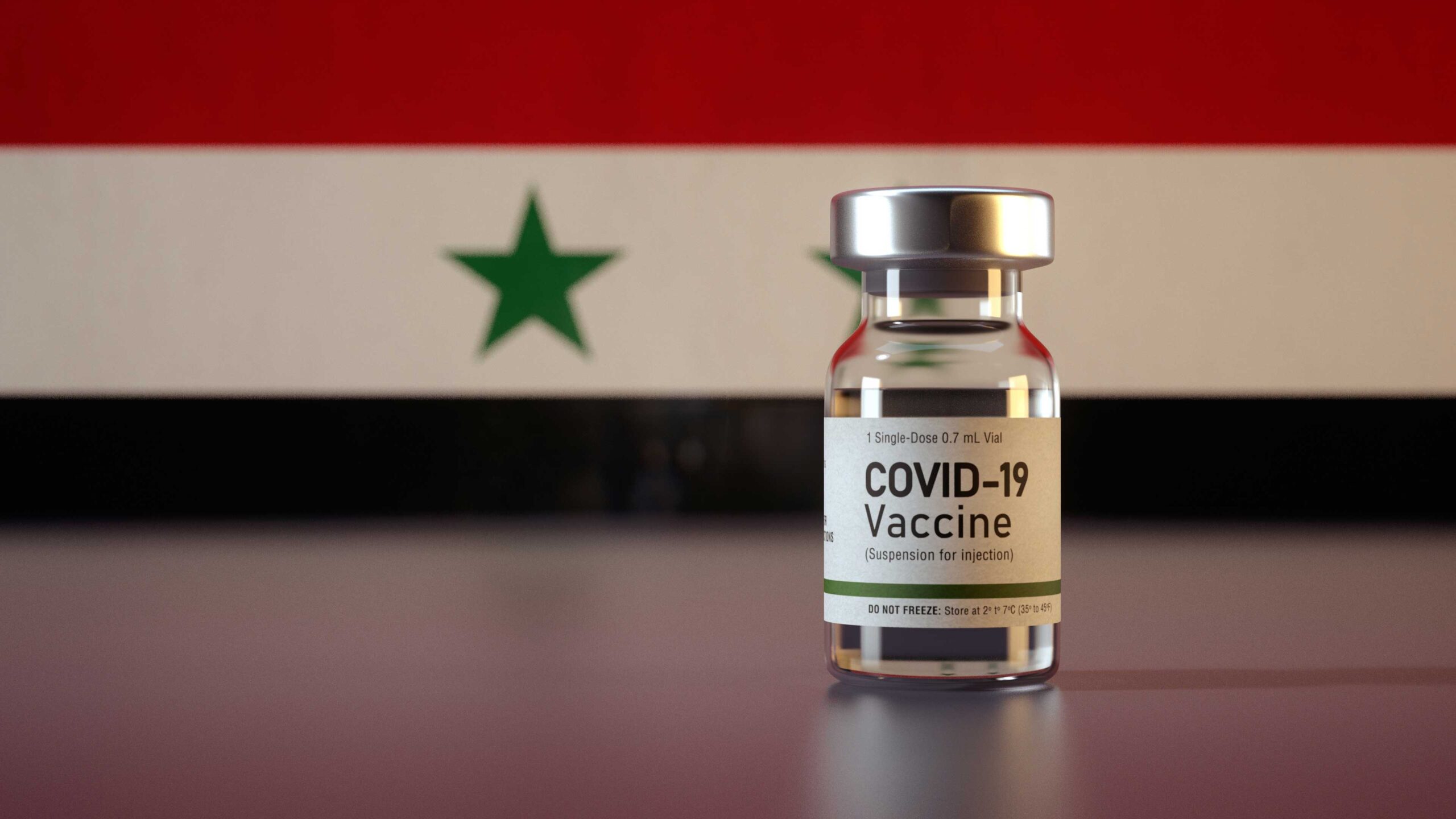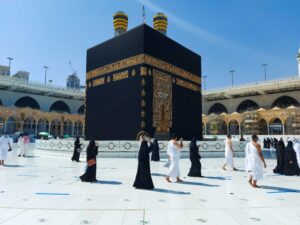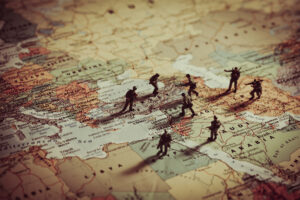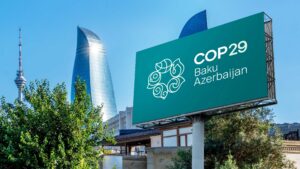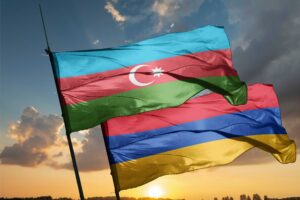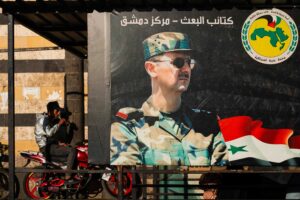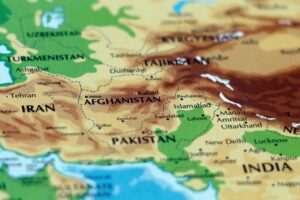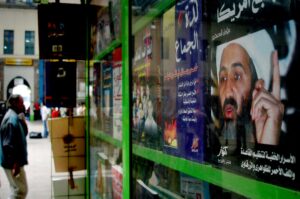Introduction
When it comes to the pandemic, Western and developed countries face a major health and economic crisis that will impact them far into the future. Syria will face the same issues but amplified by the fact that the country is subject to humanitarian and terrorist issues that puts it on the brink of a dangerous multidimensional crisis on an unforeseen scale.
The Situation As It Stands
In 2011, escalating tensions between the Assad regime and peaceful Syrian protesters who demanded democracy resulted in the Syrian Civil War. Since then, constant warfare has led to mass displacement of the Syrian population – it has been estimated that there are 7.6 million internally displaced people, IDPs, and over three million Syrian refugees. Humanitarian aid agencies have attempted to support these vulnerable populations in an environment of insecurity, but have ultimately concluded that over half of the Syrian population – of almost 22 million – needs humanitarian aid. Today, we can find many Syrian refugees in neighbouring countries such as Jordan, Lebanon, and Turkey. Nicole Ostrand explains this choice to see refuge in border countries by the lack of interest and contribution that Western countries have in resolving the issue of the crisis in Syria. Therefore, she explains, it is easier for refugees to seek refuge where the most support is offered. Foreign policy expert Bendetta Berti calls the Syrian civil war a “regional spill over”, which suggests the scale on which the Syrian refugee crisis has affected the Middle East region. The issue remains that large-scale refugee camps situated in host countries are at high risk of COVID-19 infections, and these countries have limited resources to increase preparedness measures.
Syria’s Response to COVID-19
The peak of the outbreak has not hit Syria yet, but when it does, the refugee population will be very vulnerable. As of the 16th June 2020, official accounts of the pandemic state that 177 cases and 6 deaths have been identified in Syria. Syrian ministries have given different accounts of the impact of COVID: there has only been about 100 tests taking place each day, which is insufficient to assert if an outbreak has occurred. There have been reports of a rise in the deaths of civilians over the age of 60 diagnosed with pneumonias, but many doctors have been ordered to stay silent to avoid media attention.
There has been a general realisation that social distancing and precautionary measures are near to impossible to put in place in cramped and unsanitary Syrian refugee and IDP camps. The Syrian National Survey Assessment has conducted research to check the level of knowledge about COVID-19 that has dissipated amongst the general public, and their findings suggested that only the wealthiest respondents had a reasonable understanding about the disease. Therefore, the scarce supply of protective gear that the country possesses has been overstocked by the upper class. The country has no facilities that are capable to host thousands of COVID-19 patients. The Syrian Ministry of Health and the World Health Organisation have reported that around half of Syrian hospitals are functioning, but three quarters of healthcare workers have fled and only 325 intensive care unit beds with ventilators are available. Like most countries around the world attempting to slow the spread of the virus, the regime has urgently asked people to self-isolated and wear protective gear, but this has proven unrealistic for more than half of the population living in poverty. In addition, the government has forbidden border crossing, closed international airports and imposed a curfew. Syria is simply not ready for a COVID-19 outbreak.
National and International aid
Russian and Iranian forces supported the Assad regime in its attacks against the rebels and ISIS during the Civil War. However, since the start of the pandemic their support has stagnated. This is partly due to the fear of the spread of the virus among their troops in Syria, and the growing number of cases in their respective countries. Their presence is still apparent, but their actions are less significant now – leaving the Assad regime to stand alone against this “invisible enemy”. Yet these countries have also demanded all charges of crimes against humanity against them be dropped, to allow them to focus on their response to the pandemic. In the midst of the pandemic, a ceasefire was negotiated between Turkey and Russia, northwest of Syria, in March 2020. Unsurprisingly, it did not last, and Turkey has decided to reinforce its implantation in the region. The situation on the ground is highly dependent on external factors, and since the Syrian regime’s allies have backed out it has been left to deal with the ongoing violence alone. According to relief organisations in the region, violence within Syrian borders has increased since the start of the pandemic. In result, the UAE tried to assert itself more in Syria by providing aid. On March 27, 2020, Abu Dhabi’s Crown Prince spoke with Syrian President Assad; it was his first meeting with an Arab leader since 2011. Their aid is a geopolitical strategy to slight Turkey by reintegrating Syria in the Arab region, after it had been banned from the Arab League in 2011.
The Humanitarian Dimensions
The Syrian refugee crisis has become one of the most important humanitarian crises ever, with more than half of the Syrian population in need of assistance. For the international community, this has grown into the worst humanitarian crisis since the end of the Cold War. The UNHCR has affirmed that only 700,000 Syrians out of a suspected 3 million have registered as refugees: the majority did not sign up out of fear for the limitations that the official label of ‘refugee’ brings with it. Out of all the Syrian refugees in neighbouring countries, 85 percent of them live outside refugee camps – making humanitarian assistance for those populations even more difficult to access. These vulnerable populations have been prevented from living in suitable accommodation due to a rise in rental costs, and therefore had to settle in sub-standard housing which in most cases lack sanitation, running water, and electricity. This was the situations most Syrian refugees were in prior to COVID-19.
In terms of humanitarian aid the United States has been the most significant long-term contributor to Syria. Yet now that the US has retracted all support from the country, aid has become scarcer. The European Union has managed to fulfil to some extent the funding needed since US retraction, by providing development aid and encourage humanitarian action.
Many external organisations have offered solutions for mitigating the potential impact of a COVID-19 outbreak among the most vulnerable populations in Syria. The humanitarian aid community has proposed the creation of mobile testing stations within IDP camps, but the regime has not ratified this program yet. The responsibility for education around basic sanitation, like hand-washing, has been left to local community leaders. The International Organisation for Migration has urged international donors to support the needs of IDP Syrians. They had hoped to secure $200 million to aid Syria, but less than a quarter of this amount has actually been assigned. Another solution that has proven to work is the treatment of NCDs (non-communicable diseases) and co-morbidities as shown by Médecins Sans Frontiers in Shatila refugee camp in Beirut, Lebanon in 2019. They treated Syrian refugees with diabetes and hypertension. Current studies have noticed that people with NCDs are more vulnerable to have a fatal reaction to the virus. The treatment of NCDs has proven to be effective making refugees less vulnerable to COVID. The main problem faced by humanitarian responses is the problem of protection. The lack of basic security in a violent environment makes it hard for any aid organization to assure the protection of these refugees.
Political and Economic Dimension
To understand the political dimension of the impact of the COVID-19, we can study the case of Idlib, situated in North-West of Syria. The city, with a population of 3.5 million and one million Syrians sheltered in camps, has been in the centre of the news since 2018 when the Syrian rebels took over. Aid workers have said that the region should be kept under the special monitor because it is at risk of being hit by a COVID disaster. According to the Islamic Relief report of 2020, 90 percent of the hospitals are under equipped, do not have the basic medication needed to treat mundane medical issues, and their few respirators are already being used. Once the virus arrives it will crush this precarious health system and the economy will collapse, leading the population into a hunger crisis. No official cases have been confirmed in this region for now. Yet, all these crises could make it easier for the city to fall in the hands of the Assad Regime, who could use the pandemic as a weapon. Idlib was the centre of tensions in Syria even before the pandemic, but the implication of COVID-19 has made the city more unstable and vulnerable than ever.
On the 14th of June 2020, anti-Assad protests sparked by extreme economic distress recently swept over the North-West region. The devaluation of the Syrian currency has decreased the people’s purchasing power more than ever before. Humanitarians have observed that Syrian refugees are more scared of starvation than of the COVID-19. A similar pattern has been apparent within the poorest populations of world countries when implementing quarantine – India is a notable example.
Terrorism Dimension
Another major issue resulting from the COVID-19 pandemic is the resurgence of ISIS infrastructures. As of March 2019, the US and coalition forces declared the territorial defeat of ISIS after the fall of its last stronghold in Baghouz, Syria. Due to the pandemic, security forces have shifted their attention from land protection, to focus on the cities where they will provide aid to the populations and guard ISIS prison camps. Therefore, this desertion has allowed for the return of terrorist activities seeking to re-establish their economic and logistic routes in the country. The only thing that controls their re-expansion is the fear of US air strikes. A map provided by the ISW shows that the terrorists have created links all over the Syrian-Iraqi border, mainly around the prisons and camps where ISIS members are detained. A new fear of prison riots is rising in Syria due to information of the revival of the terrorist organisation. These prisons are also considered as hot spots for COVID outbreaks due to the overcrowded cells and the lack of hygiene. The environment of uncertainty that rules within the prisons will allow more extremist groups to form and resist against the current regime who has neglected their rights. A risk of extreme radicalization is also rising during this pandemic, because of the lack of attention given to inmates.
Conclusion
Since the start of the Civil War, Syria has been home to the biggest humanitarian crisis of the twenty-first century. Once the peak of the virus hits Syria, the country will indeed face a multidimensional crisis. Syria’s fragmented leadership, split between various political groups, prevents an effective response to COVID-19. Civilians are already affected by a severe economic crisis, amplifying a general fear of starvation. The COVID will have an impact on political leadership in the country and will potentially allow for the resurgence of terrorist activities within groups like Islamic State. Ultimately, Asseburg argues, this pandemic will not serve as a turning point to determine the future of the war, “it will exacerbate the already dire outcomes of war by diminishing state capacity, fragmenting sovereignty, and intensifying violent struggle over resources.”
“Pandemic politics: Will COVID-19 exacerbate or mitigate conflicts in Libya and Syria?” by Galip Dalay, May 20, 2020, https://www.brookings.edu/opinions/pandemic-politics-will-covid-19-exacerbate-or-mitigate-conflicts-in-libya-and-syria/
“COVID and ISIS: The challenge of Repatriation from Al-Hol” by Julia C. Hurley, May 28, 2020, https://www.usip.org/publications/2020/05/coronavirus-and-isis-challenge-repatriation-al-hol
“Why the UAE Is Helping Syria and Iran to Cope With COvid-19” by Giorgio Cafiero, May 25, 2020, https://www.ispionline.it/en/pubblicazione/why-uae-helping-syria-and-iran-cope-covid-19-26286.
Berti, Benedetta, Strategic Assessment: The Syrian refugee Crisis: Regional and Human Security Implications, Vol 17, (2015).
Hopman J, Allegranzi B, Mehtar S, Managing OCVID-19 in Low-and Middle-Income Countries, (The Netherlands, March 16, 2020).
Kassen, I. Issmat, Refugees besieged: The lurking threat of COVID-19 in Syrian war refugee camps.
Kayali M, Moussally K, Lakis C, Abrash MA, Sawan C, Reid A, Edwards J, Treating Syrian refugees with diabetes and hyhpertension in Shatila refugee camp, Lebanon: Médecins Sans Frontières model of care and treatment outcomes, (Lebanon, 2019).
Mohsen F, Bakkar B, Armashi H, Aldaher N, A Crisis within a Crisis: COVID-19 Knowledge and Awareness among the Syrian Population-A National Survey Assessment, (Syria, 2020).
Ostrand, Nicole, The Syrian Refugee Crisis: A Comparison of Responses by Germany, Sweden, the United Kingdom, and the United States, Vol 3, (New York, 2015).
Stangl T, Zinkanell, M, The Covid-19 Situation in Syria: Impacts, Scenarios, and Responses, (Germany, May 2020).


